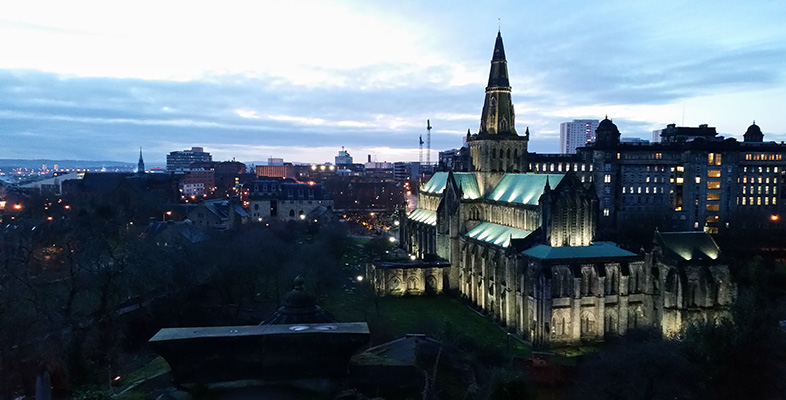2 Who belongs to Glasgow? The TV programme
2.1 How the programme progresses
The programme takes the form of a visit to Glasgow. We talked to people and asked about their image(s) of Glasgow and whether these had changed – what was the ‘old’ image; what is the ‘new’; how has it changed; what will it be like in another ten years?
The five main participants have different experiences of Glasgow and these are represented in the images which they hold and aspects of the city's character which they highlight. The themes and ideas behind the programme are all to be found in what they say and what they see.
Gordon Borthwich talks about the long history of Glasgow and denies its violent image as being worse than elsewhere. His perspective highlights what he sees as the city's heritage, which links the past with the present and the future.
Linda Whiteford is part of the city's positive image-building. She sees a place that has always been better than it was painted and sees it now in a very positive, vibrant light.
Jean Forbes sees the urban regeneration process as positive and expects the benefits to ‘trickle down’ to other parts of the city – while acknowledging that this process has been slowed by recession in the economy.
Gerry Mooney points out many of the contrasts in Glasgow's image, or images, and adopts a more critical stance. He discusses the key concepts and themes which provide the framework for the programme.
Edward Stephenson looks, above all, to locality (Drumchapel) rather than to city or region. But he identifies with Glasgow against Belfast, London or Edinburgh.
